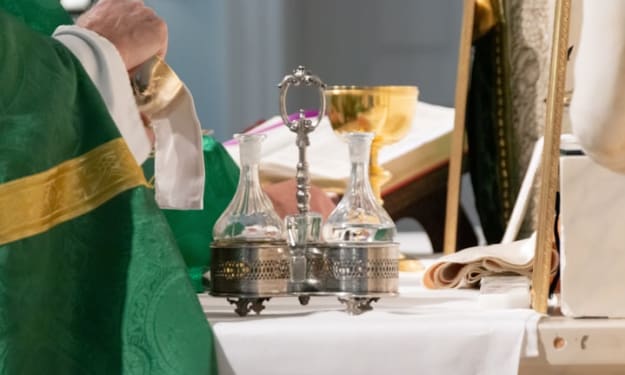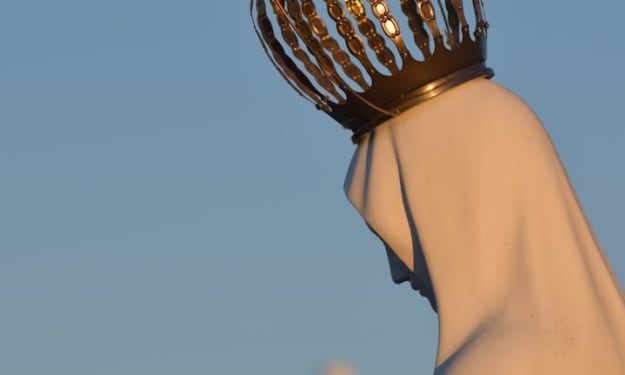Controversial Display: African Ancestral Heads In European Jars
''Preservation Or Exploitation''

Introduction:
The preservation of human remains has long been a subject of debate, with museums and institutions around the world housing collections that hold historical and cultural significance. However, a lesser-known aspect of this practice involves the display of African ancestral heads in jars within European institutions. In this article, we examine the complex and controversial issue surrounding the presence of these ancestral remains, exploring the historical context, ethical concerns, and ongoing efforts to address this sensitive matter.
Historical Context: Colonialism and Collecting Practices
The collection of African ancestral heads in jars can be traced back to the era of European colonialism. During this period, explorers, missionaries, and scientists engaged in the acquisition and study of cultural artifacts, including human remains. These acts were often driven by a Eurocentric curiosity and a desire to reinforce notions of racial superiority, leading to the removal and display of ancestral heads.
Cultural Significance and Spiritual Beliefs
In many African cultures, the head holds profound spiritual and ancestral significance. It is considered the seat of one's identity, wisdom, and spiritual power. The removal and display of ancestral heads in jars are seen as a severe disruption of the spiritual connection between the living and their ancestors, disrupting cultural practices and traditions.
Ethical Concerns and Human Rights
The display of African ancestral heads in European museums raises significant ethical concerns. Many argue that the act of preserving and showcasing these remains without consent violates the principles of cultural heritage, human dignity, and the rights of indigenous communities. Such practices contribute to the ongoing legacy of colonialism, which perpetuated the exploitation and devaluation of African cultures.
Restitution and Repatriation Efforts
In recent years, there has been a growing global movement advocating for the repatriation and restitution of cultural artifacts, including human remains, to their countries of origin. African nations, activists, and scholars have called for the return of ancestral heads to their respective communities, aiming to restore cultural heritage and heal the wounds of colonialism. Some European institutions have responded by engaging in dialogue and collaborative initiatives for repatriation.
Engaging in Dialogue and Reconciliation
Addressing the presence of African ancestral heads in European institutions requires a multifaceted approach. It involves fostering dialogue and establishing partnerships with African communities, acknowledging the historical injustices and the cultural significance of the remains. Collaborative efforts can lead to repatriation, reburial ceremonies, educational initiatives, and the revitalization of cultural practices, fostering understanding and reconciliation.
Rethinking Museum Practices
The controversy surrounding the display of African ancestral heads prompts a broader conversation about museum ethics and practices. Museums are increasingly reassessing their collections, seeking to establish ethical guidelines for the handling and display of human remains. This includes engaging in dialogue with source communities, promoting cultural sensitivity, and prioritizing the rights and wishes of indigenous peoples.
Conclusion:
The display of African ancestral heads in jars within European institutions is a controversial and deeply sensitive issue that demands careful consideration. The historical context of European colonialism and the acquisition of cultural artifacts played a significant role in the presence of these ancestral remains. However, their preservation and display without consent have raised ethical concerns and violated the principles of cultural heritage and human rights.
For many African cultures, the head holds profound spiritual and ancestral significance. The removal and display of ancestral heads disrupts the spiritual connection between the living and their ancestors, undermining cultural practices and traditions. This practice perpetuates the ongoing legacy of colonialism, which devalued African cultures and marginalized indigenous communities.
In recent years, there has been a growing global movement advocating for the repatriation and restitution of cultural artifacts, including human remains, to their countries of origin. African nations, activists, and scholars have called for the return of ancestral heads, aiming to restore cultural heritage and address the historical injustices inflicted upon their communities. Some European institutions have responded by engaging in dialogue and collaborative initiatives to facilitate repatriation.
The process of addressing the presence of African ancestral heads in European institutions requires a comprehensive approach. It involves fostering dialogue, establishing partnerships with African communities, and recognizing the historical injustices and cultural significance of the remains. Collaborative efforts can lead to repatriation, reburial ceremonies, educational initiatives, and the revitalization of cultural practices, promoting understanding, healing, and reconciliation.
Furthermore, this controversy prompts a broader conversation about museum ethics and practices. Museums are increasingly reevaluating their collections and striving to establish ethical guidelines for the handling and display of human remains. This includes engaging in dialogue with source communities, promoting cultural sensitivity, and prioritizing the rights and wishes of indigenous peoples. By adopting a more inclusive and respectful approach, museums can contribute to the preservation and respectful representation of diverse cultural heritage.
Ultimately, addressing the presence of African ancestral heads in European institutions necessitates a thoughtful and collaborative process. It requires acknowledging the historical injustices, engaging in meaningful dialogue with affected communities, and prioritizing cultural sensitivity and ethical practices. Through these efforts, we can work towards rectifying the wounds of colonialism, restoring cultural heritage, and fostering a more inclusive and equitable future.
About the Creator
Redmark Foreal
Explore captivating articles on facts, history, life hacks, politics, psychology, poems, and mysteries. Discover engaging content that informs, entertains, and inspires. Happy reading






Comments
There are no comments for this story
Be the first to respond and start the conversation.